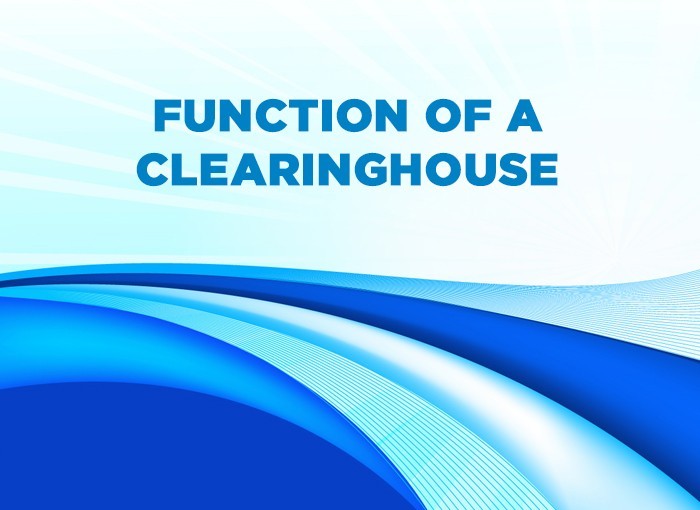Role and responsibilities of clearinghouse in Medical Billing
In medical billing, clearing housing acts as a middleman, which carries medical claims information between the healthcare professionals and active insurance providers. A clearinghouse is responsible for checking, scrubbing the medical claims for errors, and verifying if the claim is rightly processed by the payer. Once the claims are considered clean, the claims are then sent electronically to insurance providers for the revenue cycle process. Additionally, clearinghouses also give the facility of switching from paper, to electronically for a cleaner, easier process. Clearing housing also helps in taking nonstandard data to change into standard data in the insurance provider’s system. Do not be confused with clearinghouses of banks with clearinghouses of medical billing as the former help in exchanging payments between banks and other financial institutions. Clearinghouses of banks and clearing housing of medical billing are different. In fact, in medical billing, clearinghouses ensure faster processing of claims.
What is the working action of clearinghouses?
Every medical billing company has software on its desktop that is responsible for making an electronic file. After the first step, the electronic file is sent to the clearinghouse of medical billing. Afterward, the clearinghouse checks the claims for errors and then passes them for inspection. The next step is transmitting the electronic claim to a specified insurance provider under a secure connection that meets the strict guidelines put by HIPAA.
Medical claims are also defined as ‘HIPAA Transactions’ as it’s because of HIPAA that claims cannot be sent directly for patient billing to insurance providers by using email. After passing this stage, the insurance provider either accepts or rejects the claim, a message is usually sent by the insurance company back to the clearinghouse about the status of the claim. Now the medical clinic either has accepted or rejected the claim. In case of rejection of the claim, the healthcare provider needs to make any needed corrections and then re-sends the claim back to the insurance company. However, if there are no other corrections required, then the medical clinic will receive a reimbursement check or Electronic Funds Transfer (EFT) combined with an explanation of benefits (EOB).
These days many medical billing clearinghouses are transmitting the electronic claim information securely to the insurance providers for reimbursement.
Look at some key points to check in premium health care clearinghouse:
- Verifying the eligibility – Checking the eligibility of the patient before their appointment
- Electronic Remittance Advice (ERA) – It automatically updates the payments & makes adjustments
- Sending the reports of claim status – It helps to track the claims at all times
- Analysis Rejection – It helps to explain error codes simply in English
- Online Access – It helps to check and correct claims online
- Claims that are printed – Having claims that are automatically printed on paper helps to track and check them online.
- Clearinghouses that are affordable – While considering the cost of forms, postage, printing, envelopes, and time spent, a clearinghouse costs much less than the paper claims, plus electronically it gives you many other benefits.
Some of important functions of Clearinghouse in Medical Billing include:
- The clearinghouse in medical billing helps to ensure that the right procedural and valid diagnosis codes are submitted in medical claims. It also ensures that every procedural code submitted in claims is appropriate.
- The Clearinghouse in Medical Billing is also helpful in preventing time-consuming errors. Filing the claims electronically can help in submitting the claims in a faster way resulting in fast reimbursement times.
- The clearinghouse helps medical clinics to catch and fix errors in medical claims in just minutes resulting in the right claims processing. In this way, it results in fewer denied claims and more successful reimbursed claims.
- Submitting the claims in a bundle instead of separately saves time and increases reimbursements.
- A clearinghouse also helps in minimizing the human errors that may happen due to manual re-key transaction data at each insurance provider’s website.
- Due to fewer errors, a clearinghouse vastly improves the relationship of medical providers with insurance carrier providers.
- A good electronic clearinghouse reduces or eliminates the need for paper envelopes, forms, and stamps. It also simplifies and speeds up claims processing.
The best way to process medical claims is by an electronic clearinghouse that offers desirable advanced features like sending claims file status, verifying eligibility, checking the claims rejection, secondary claims processing, patient statement services, electronic remittance advice, and summaries of transactions. All of these advanced features are present in a good clearinghouse. Using a medical billing clearinghouse involves steps beginning with the hospital to preparing a claim for insurance providers. To maximize the revenue cycles, there should be the right processing of claims and an improved billing process.




